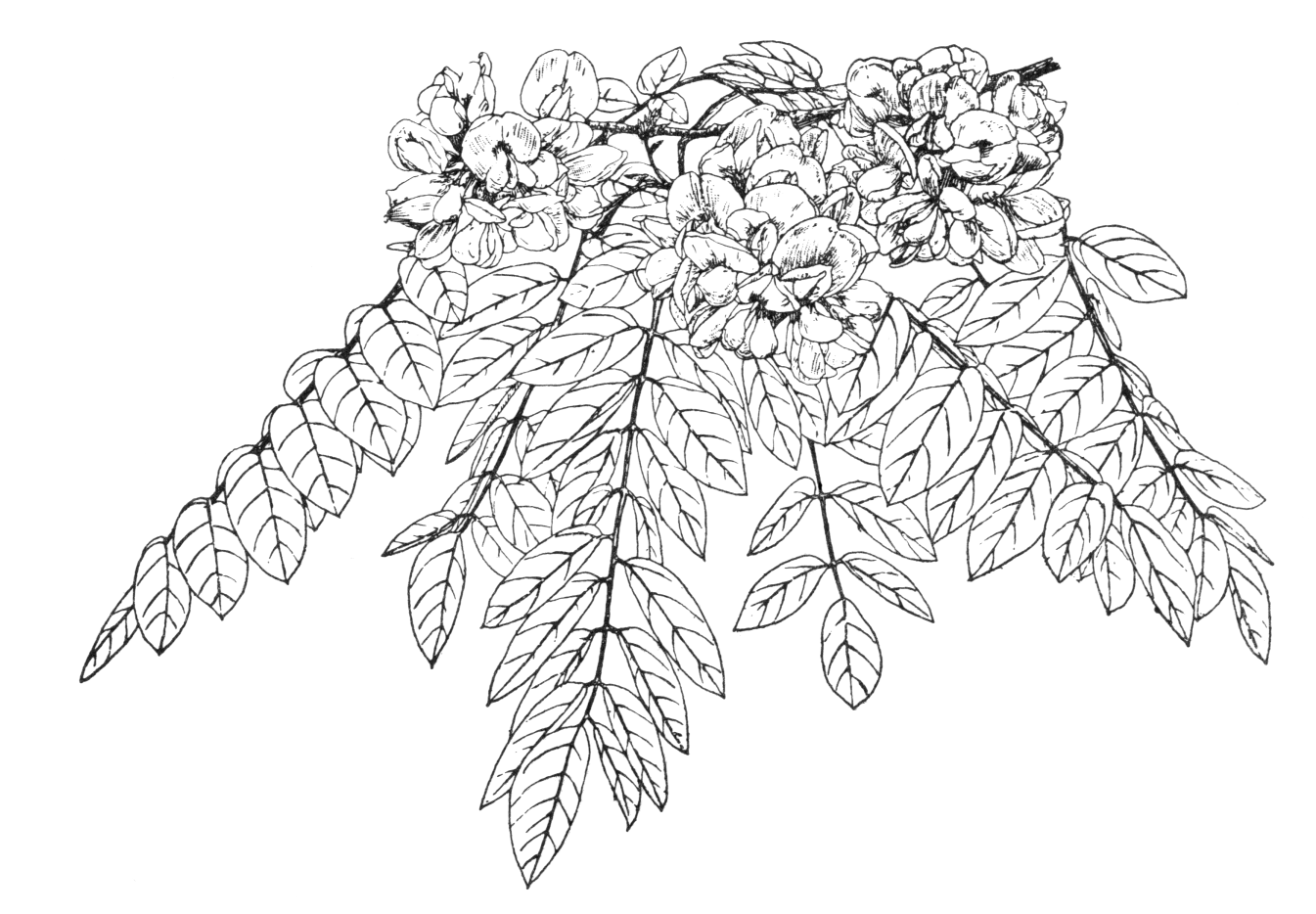Robinia viscosa
Credits
Article from Bean's Trees and Shrubs Hardy in the British Isles
Recommended citation
'Robinia viscosa' from the website Trees and Shrubs Online (treesandshrubsonline.
A deciduous tree 30 to 40 ft high, with a trunk 12 to 18 in. thick, and often furnished with large burrs; young branches covered with glands which exude a sticky substance that adheres to the fingers when touched. Leaves pinnate, 3 to 10 in. long, the main-stalk hairy and viscid like the young twigs. Leaflets eleven to twenty-one, oval or ovate, 1 to 2 in. long, 1⁄3 to 3⁄4 in. wide, dark green above, paler and at first slightly downy beneath, ultimately glabrous. Stipules at first 1⁄4 in. long, becoming longer and spiny with age. Racemes 2 to 21⁄2 in. long, almost as wide, with a naked stalk half as long. Flowers 3⁄4 in. long, ten to fifteen in a raceme, without fragrance; petals pale rose with a yellow blotch on the standard; calyx dark red, hairy. Pod 2 to 31⁄2 in. long, covered with viscid glands. Bot. Mag., t. 560.
Native of the mountains of North Carolina, where it was originally discovered by William Bartram in 1776. It was introduced to France by Michaux in 1791, and six years later to England. It is a smaller tree than R. pseudacacia and of more stunted growth, but it flowers very freely and makes a bright picture towards the end of June. The viscid substance on the branches renders it easily distinguishable, although this appears to vary in amount, and is some times not very discernible. According to Sargent it is one of the rarest of American trees, and from the time of Michaux to 1882 was never found in a genuinely wild state. But it is now naturalised in many parts of the eastern United States. It is not common in English gardens, but there were several old trees at Kew, the largest of which had a trunk 5 ft 3 in. in girth at 5 ft from the ground, which is considerably more than the dimensions recorded of wild specimens. These old trees were almost unarmed, the spines only occurring on exceptionally vigorous shoots. A handsome tree in bloom.
The largest of the few trees recorded recently grows at Borde Hill, Sussex, and measures 42 × 4 ft (1968).
From the Supplement (Vol. V)
R. × ambigua ‘Decaisneana’. – specimens: Kew, pl. 1969, 56 × 83⁄4 ft, pl. 1887, 60 × 51⁄4 ft, pl. 1897, 68 × 61⁄2 ft and 74 × 6 ft (1981); Oare House, Pewsey, Wilts., 56 × 51⁄2 ft (1981); Hidcote Manor, Glos., 65 × 71⁄4 ft (1983).

